Many readers have been asking for Windows 11 24H2 testing with the Ryzen 7 5800X3D, so we’ve worked hard to make that happen. In this review, we’ll be examining that data and comparing it with the new Ryzen 7 9700X. As always, there’s a lot of data to cover, but before diving in, let’s go over a few important details about the testing process.
Initially, we had benchmarked both CPUs using the Insider Preview build of Windows 11 24H2, as it was the only version available at the time. However, just as we were finalizing the data, Microsoft officially released 24H2. Rather than pushing out what we had, we decided to download the official 24H2 version and start fresh, which is exactly what we did and that’s the results we’ll be showing you today.
In this benchmark review, we’ll be comparing the 5800X3D and 9700X using the patched version of 23H2 as well as the newly released 24H2 build. The newer Ryzen chip was tested using the latest BIOS revision featuring AGESA 1.2.0.2.
And while this enables the optional 105W mode, we’ve stuck with the default 65W mode for this testing. This approach makes the most sense – not only because it’s how the processor was advertised, but also because it offers the best balance between performance and power.
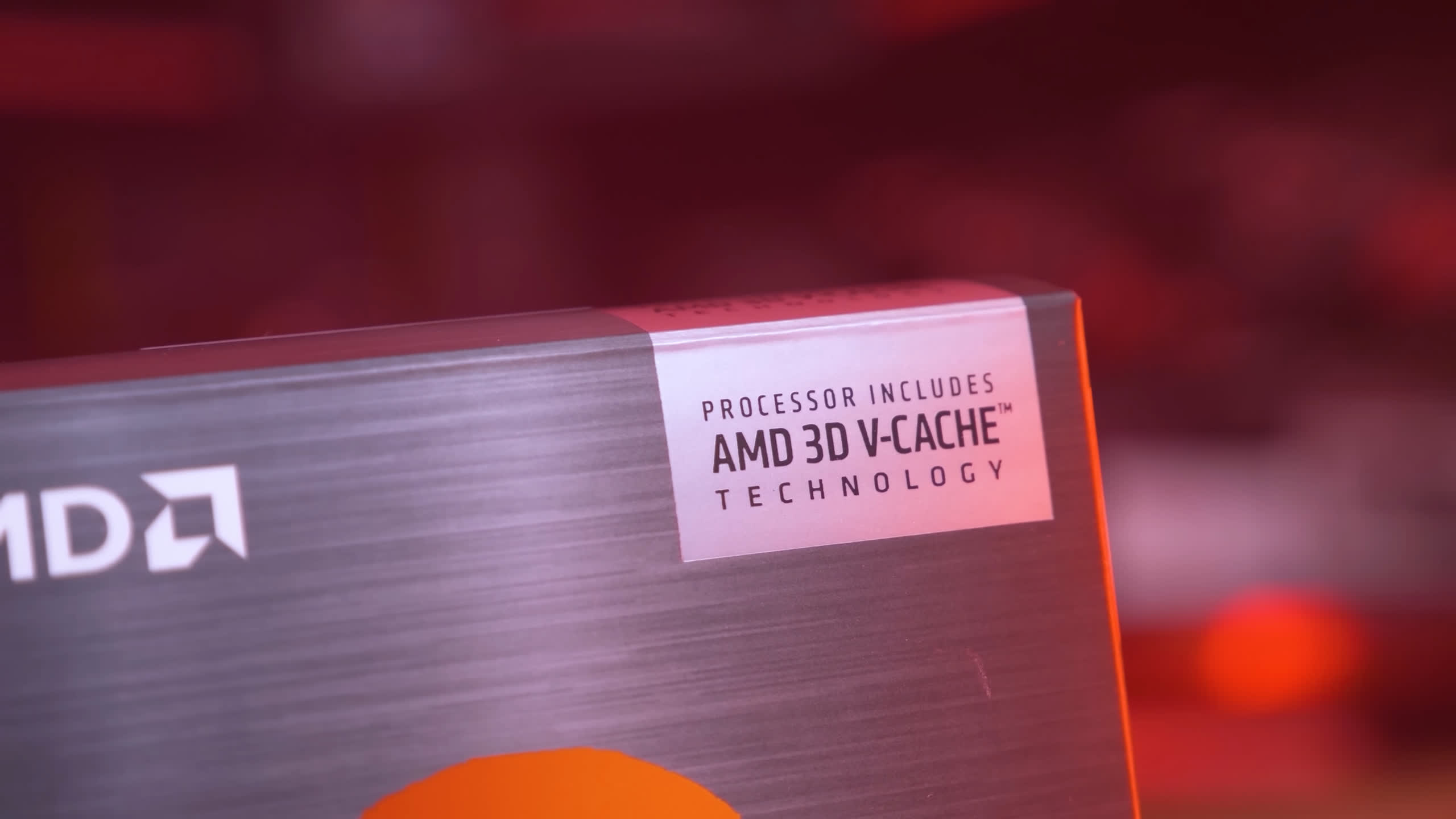
Then the 5800X3D was benchmarked on the MSI MPG X570S Carbon Max WiFi using BIOS version 7D52v1B1, which is based on AGESA 1.2.0.Cc.
Test System Specs
| CPU Motherboard Memory |
|
| AMD Ryzen 7 9700X G.Skill Trident Z5 RGB 32GB DDR5-6000 CL30 Gigabyte X670E Aorus Master [BIOS F33b] DDR5-6000 [CL30-38-38-96] |
|
| AMD Ryzen 7 5800X3D MSI MPG X570S Carbon MAX WiFi [BIOS 7D52v 1B] G.Skill Ripjaws V Series 32GB DDR4-3600 CL14 DDR4-3600 [CL14-15-15-35] |
|
| Graphics Card | Asus ROG Strix RTX 4090 OC Edition |
| ATX Case | Antec Flux Pro |
| Power Supply | Kolink Regulator Gold ATX 3.0 1200W |
| Storage | TeamGroup T-Force Cardea A440 M.2 PCle Gen4 NVMe SSD 4TB |
| Operating System | Windows 11 |
| Display Driver | GeForce Game Ready Driver 565.90 WHQL |
Now, let’s get into the results…
Benchmarks
Star Wars Outlaws
While Star Wars Outlaws may have been a flop, it’s an excellent test for CPU gaming performance from a technical standpoint. This is a particularly CPU-demanding title, especially in the NPC-heavy section we’re using for testing.
Here, the 5800X3D is 9% slower than the 9700X. Although this isn’t a huge margin, the difference is noticeable when considering high refresh rate performance, as the frame rate increases from 117 fps to 128 fps. That said, for an older product, the 5800X3D’s performance remains impressive, even when compared to the 9700X.

Warhammer 40,000: Space Marine 2
Space Marine 2 is another new game, and while it was well received, we’re including it in this benchmark because it’s a very CPU-heavy title. Interestingly, the 23H2 patch didn’t fully resolve the performance issues this game faced on Windows 11. However, the 24H2 build boosts performance significantly for both CPUs by about 9%. Despite this improvement, the 5800X3D is still 7% slower than the 9700X on 24H2.

Hogwarts Legacy
Hogwarts Legacy is a modern game that’s both CPU and memory-intensive, with DDR5 providing a clear advantage here. The 9700X scales better with 24H2, resulting in 14% more performance compared to the 5800X3D, though the improvement to the 1% lows is a more modest 9%.
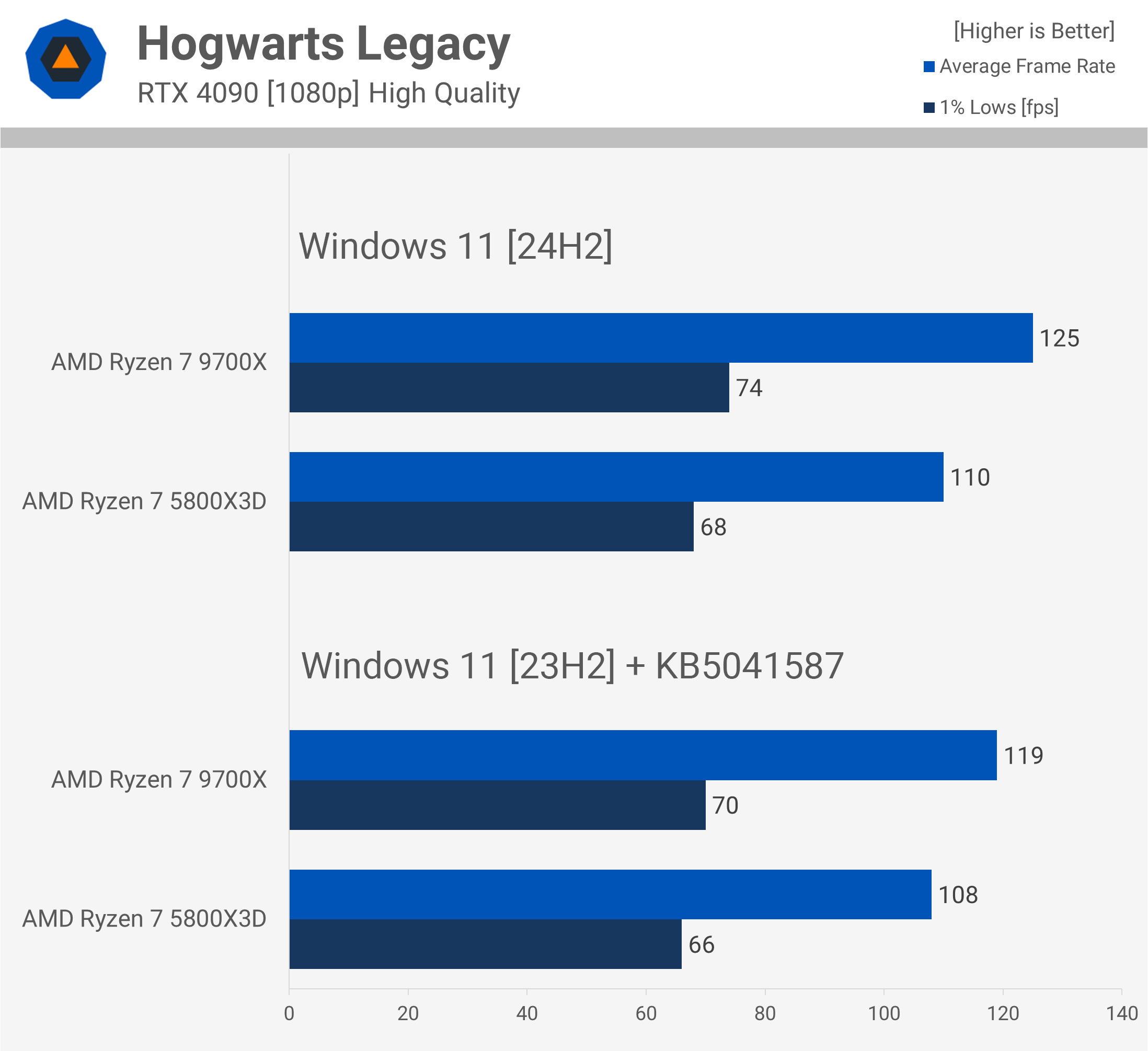
Assetto Corsa Competizione
Next up is Assetto Corsa Competizione, where we observed a 3-5% performance uplift with 24H2 over the patched 23H2. This game was a significant outlier for Zen 5, showing the largest gains for the 9700X over the 7700X.
We believe this is due to the increased L1 cache capacity of Zen 5, as this title is extremely cache-sensitive. As a result, 3D V-Cache also boosts performance significantly, leading to very competitive results between the 5800X3D and 9700X, with the older Zen 3 CPU outperforming by 3%.

Spider-Man Remastered
The 5800X3D excels in Spider-Man Remastered, rendering an average of 187 fps, which is 13% faster than the 9700X. However, the two CPUs are more evenly matched when comparing the 1% lows.

Homeworld 3
Homeworld 3 performance was addressed with the 23H2 patch, which aligns it with the 24H2 results. Both the 5800X3D and 9700X deliver the same level of performance, making them evenly matched in this game.
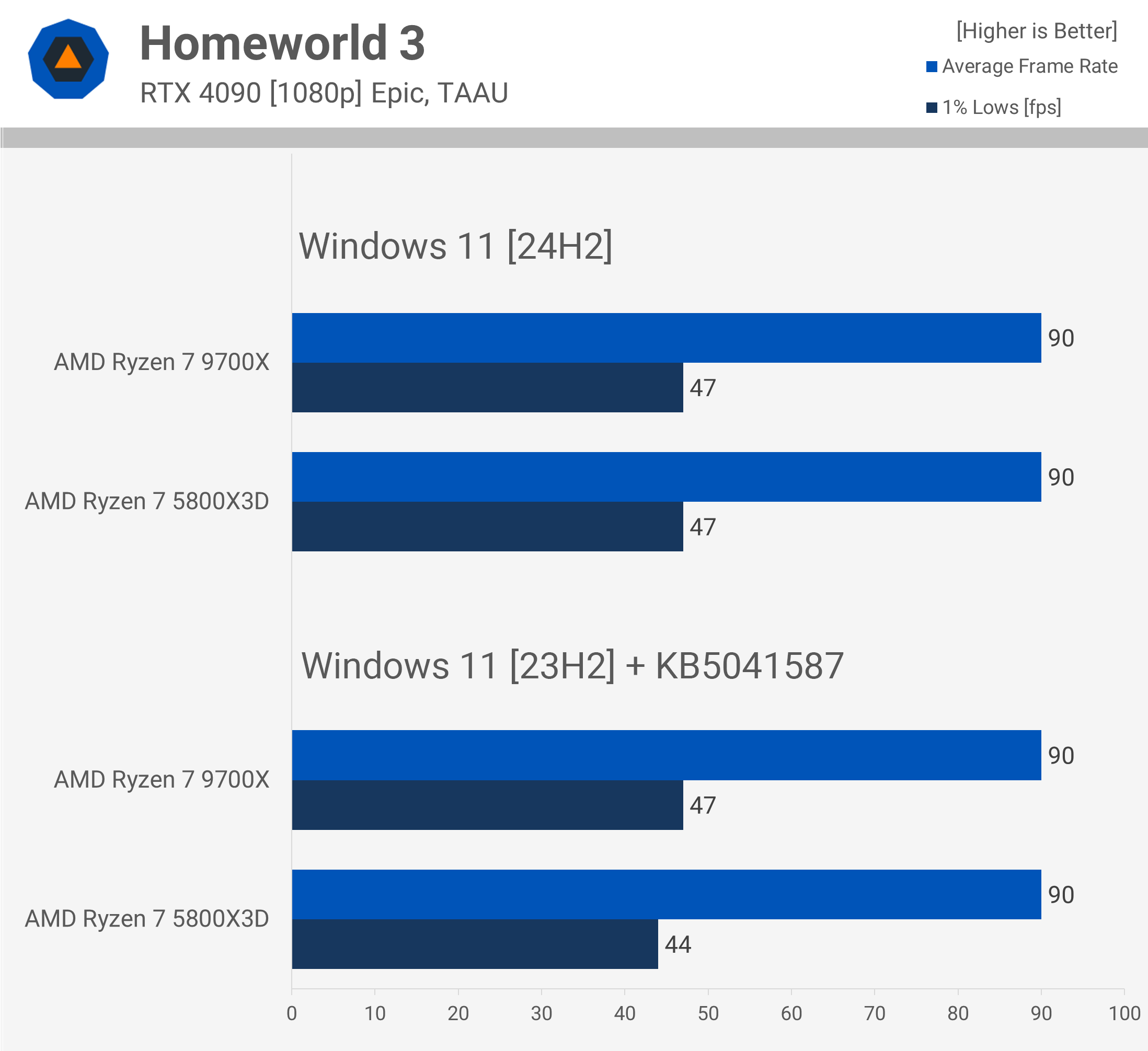
A Plague Tale: Requiem
In A Plague Tale: Requiem, the 9700X is significantly faster than the 5800X3D, offering a 13% performance boost. This is likely due in part to the improved memory bandwidth provided by DDR5.

Cyberpunk 2077: Phantom Liberty
Cyberpunk 2077: Phantom Liberty saw a substantial performance improvement with the 23H2 patch, which resolved the earlier issues. As a result, both CPUs deliver identical performance in this example, whether on the patched 23H2 or 24H2.

Watch Dogs: Legion
We observed the same performance in Watch Dogs: Legion with 24H2 as we did with the patched 23H2. In this case, the 5800X3D was 4% faster than the 9700X.

Far Cry 6
Interestingly, with the official release of 24H2, we noticed a slight performance regression for both CPUs in Far Cry 6 compared to the patched 23H2 build, though it’s only a 3% margin. Nevertheless, both the 9700X and 5800X3D deliver similar levels of performance in both versions.
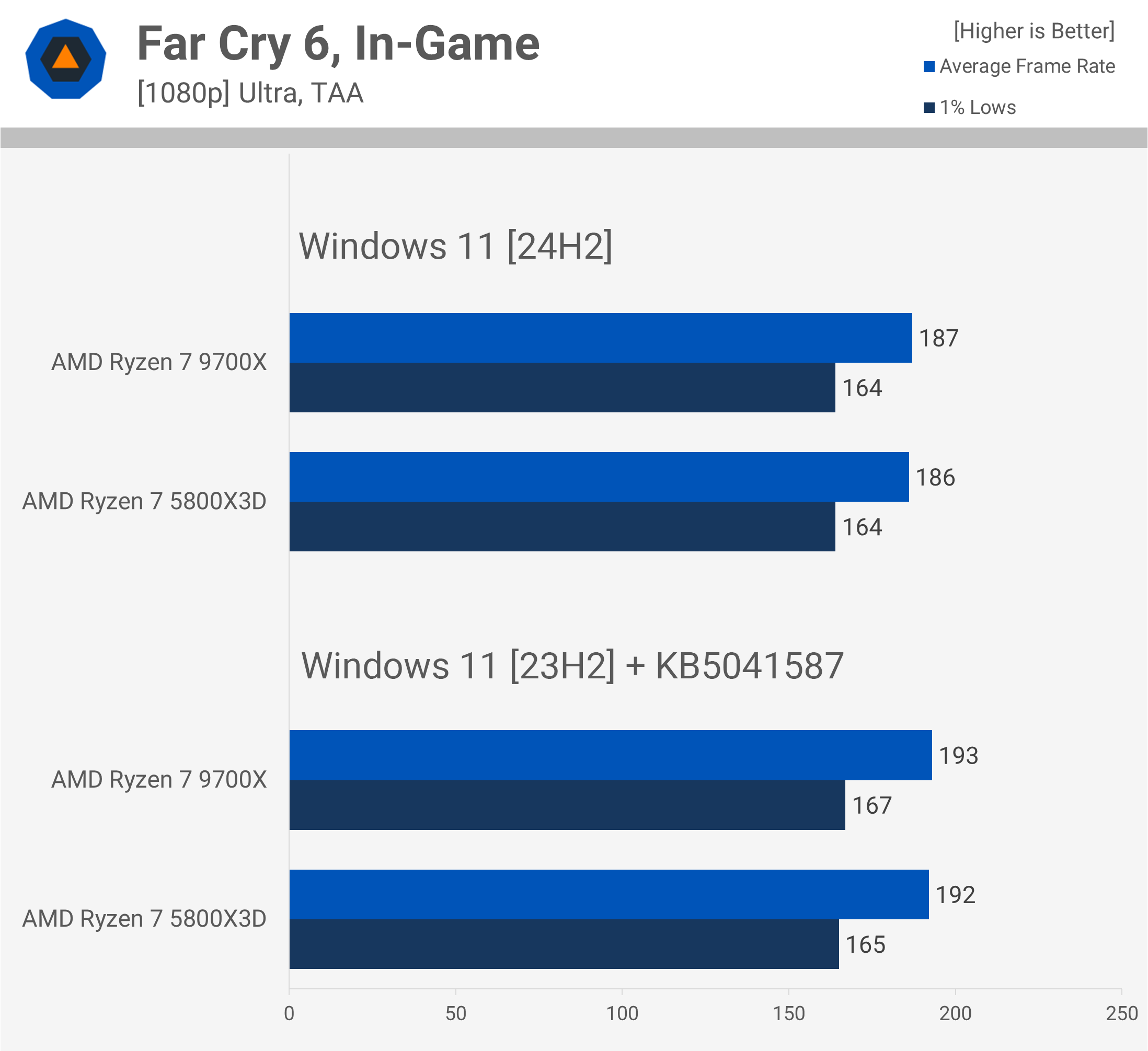
Tom Clancy’s Rainbow Six Siege
The 5800X3D performs very well in Tom Clancy’s Rainbow Six Siege, despite trailing the 9700X by a rather large 17% margin. However, the difference is reduced to 8% when comparing the 1% lows.

Borderlands 3
In Borderlands 3, both CPUs are evenly matched when using Windows 11 24H2. What’s interesting is that the 5800X3D saw the largest performance improvement when transitioning to 24H2, while the 9700X experienced a slight performance regression. However, it’s important to remember that we’re comparing it to the patched version of 23H2. In any case, the 5800X3D was 6% faster on 24H2, making it just 4% slower than the 9700X, compared to the previous 10% gap.
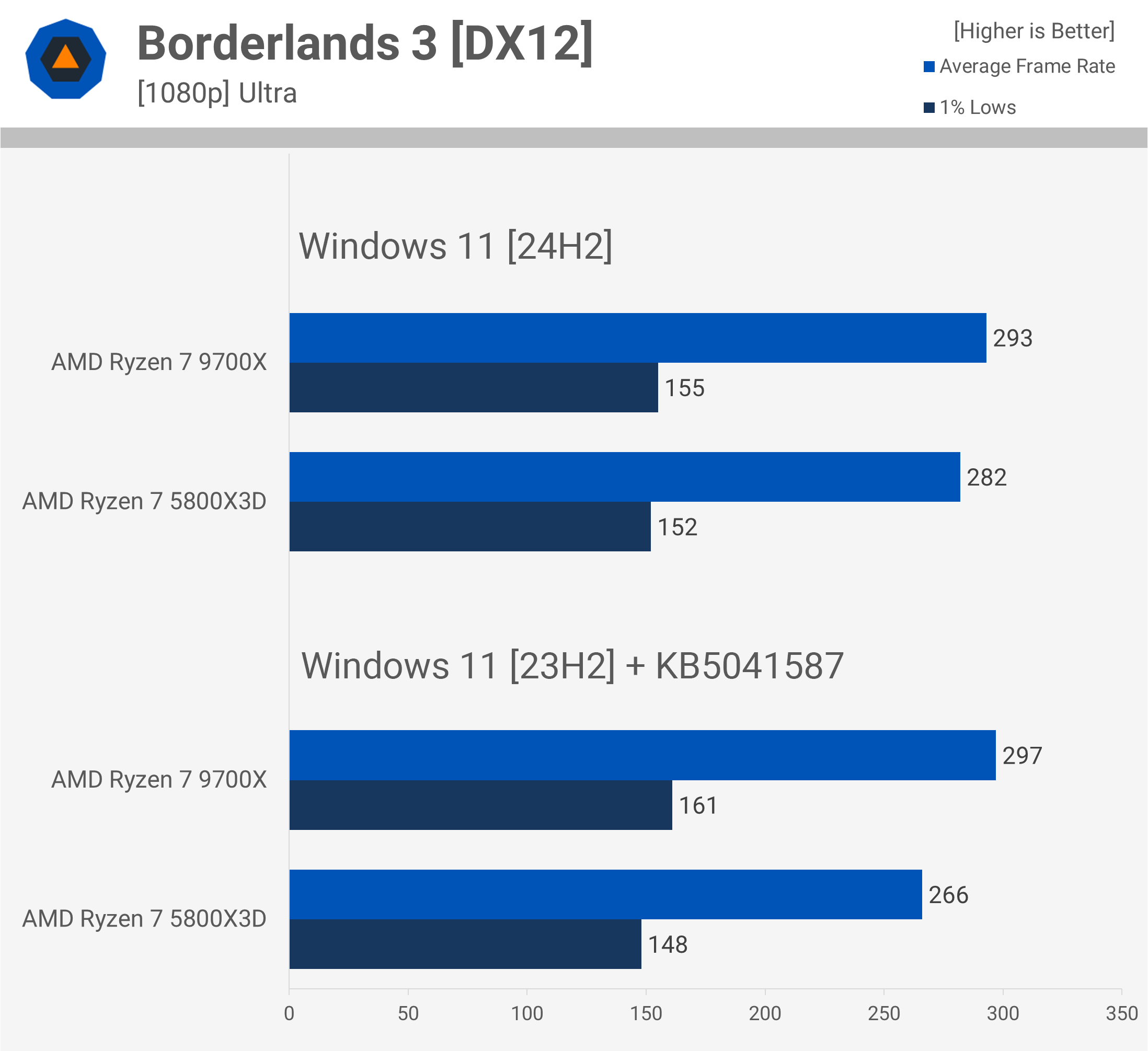
The Callisto Protocol
Performance for the 9700X was fixed in The Callisto Protocol with the 23H2 patch, but this wasn’t the case for the 5800X3D, which saw a 4% uplift when moving to 24H2. This resulted in identical performance between the two CPUs.
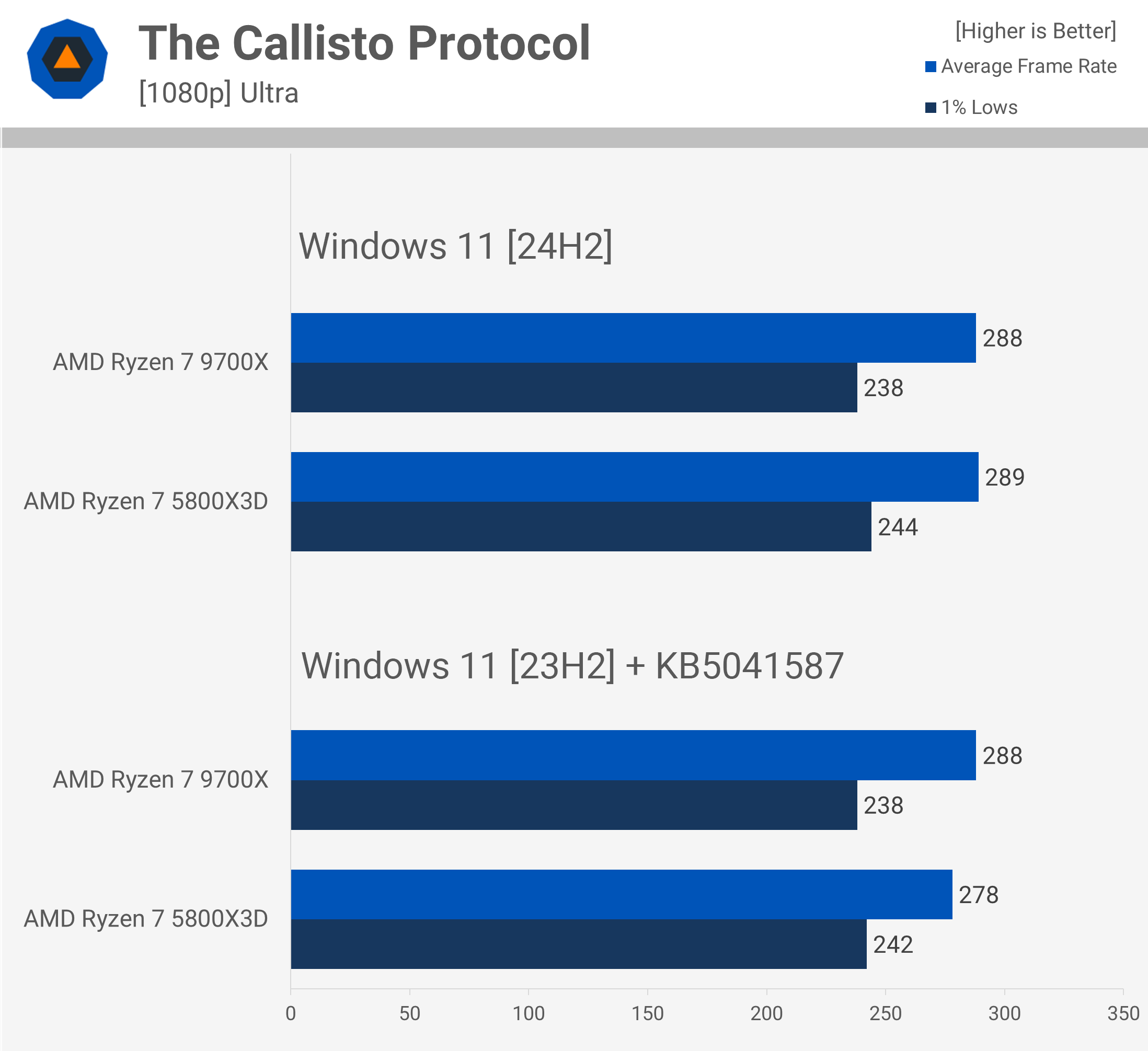
Shadow of the Tomb Raider
Shadow of the Tomb Raider continues to perform better on the 5800X3D, with the older Zen 3 part being 6% faster, rendering an average of 273 fps. However, the 1% lows were slightly higher on the 9700X.
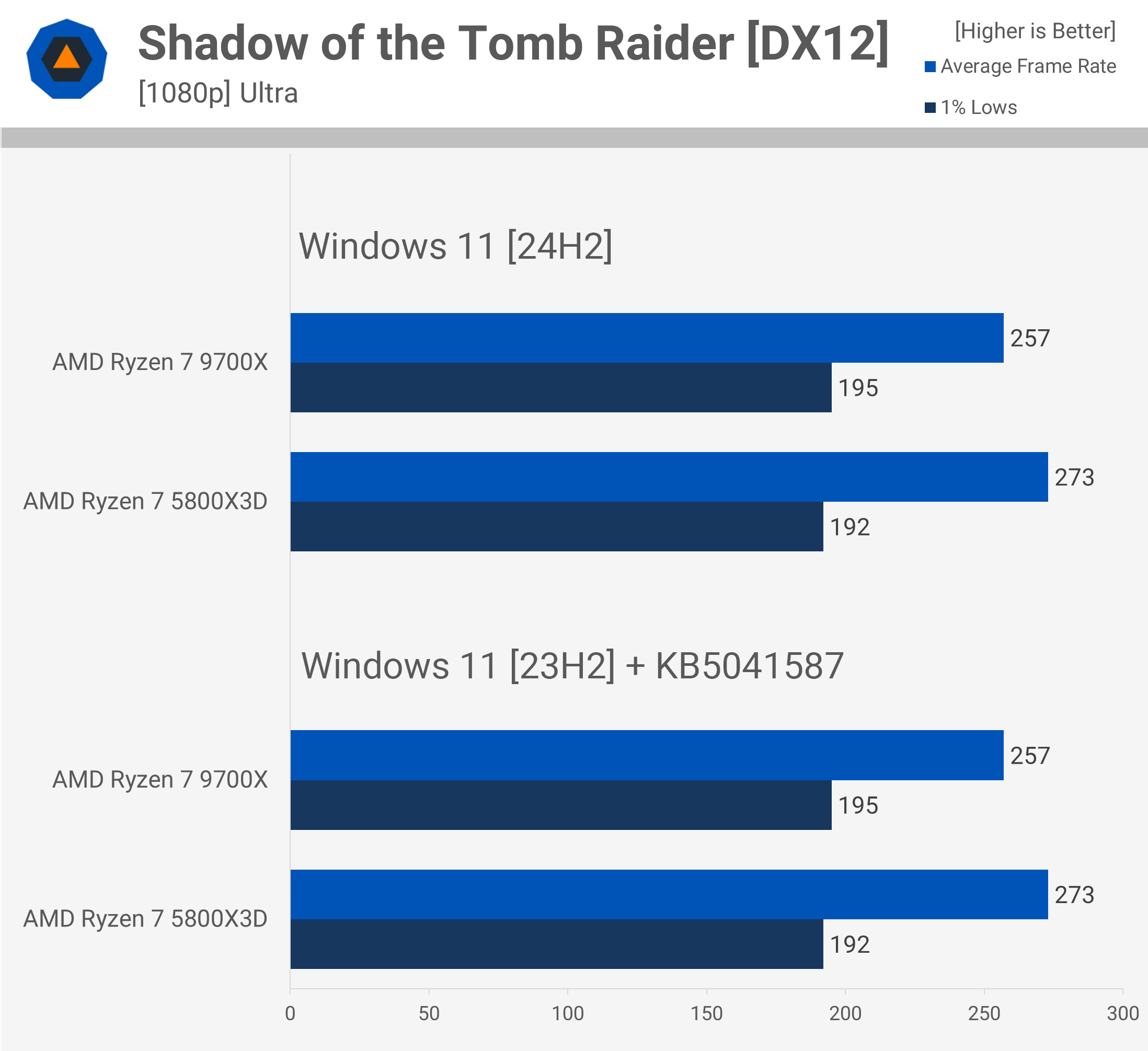
F1 24
The performance in F1 24 was addressed with the 23H2 patch, so there’s little difference between the updated 23H2 build and the new 24H2 version. That said, the 9700X still holds an 11% performance advantage. Some may argue that this isn’t a significant margin, given that the 5800X3D is two and a half years old and based on a four-year-old architecture. Regardless, this is one of the larger performance gains we’ve seen for the 9700X.
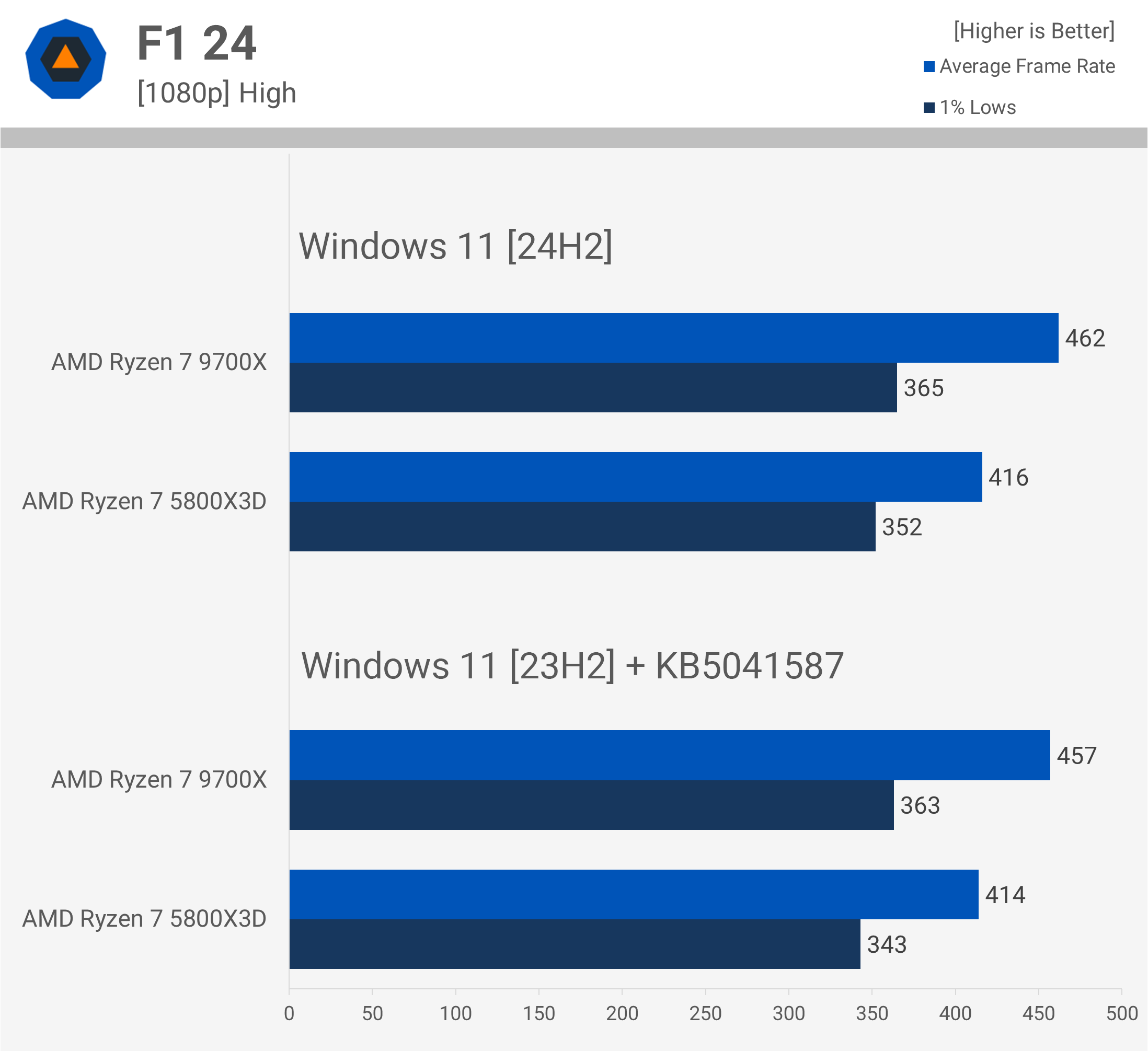
The Riftbreaker
The Riftbreaker struggled on Ryzen processors with Windows 11 before the 23H2 patch and the release of 24H2, which delivered the best results. Comparing the 5800X3D and 9700X on the latest build of Windows, we find the older 3D V-Cache part is just 2% slower, indicating very similar overall performance.
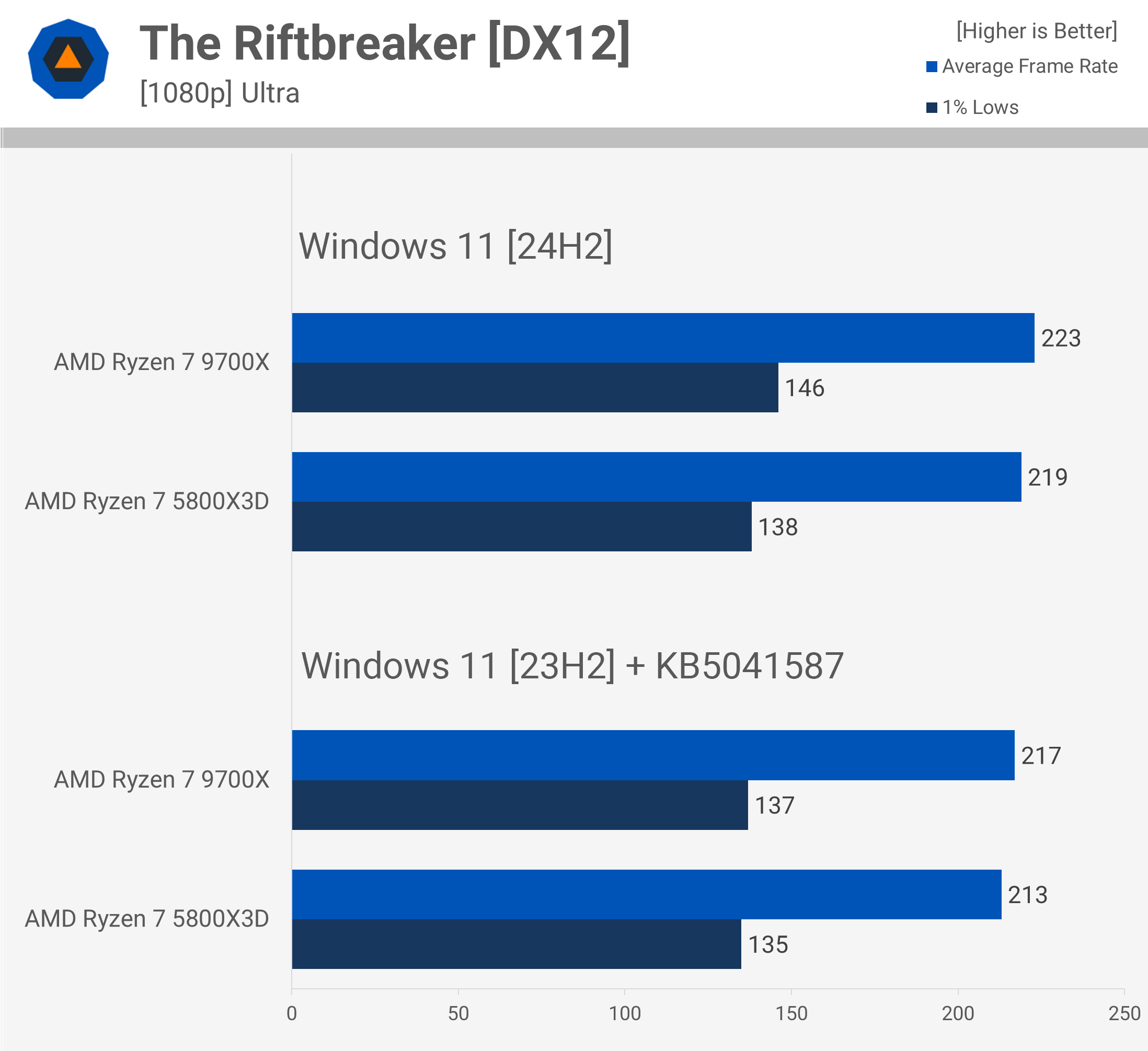
Remnant II
Remnant II also performed worse on 23H2 prior to the patch, though both CPUs saw improvements on 24H2. The 5800X3D experienced a 5% uplift, while the 9700X improved by 7%. However, the older Zen 3-based CPU struggled in this title, coming in 14% slower than the 9700X, with an average of 108 fps.

Star Wars Jedi: Survivor
Star Wars Jedi: Survivor saw significant performance improvements with the 23H2 patch, but performance is even better on 24H2. It’s worth noting that some have mistakenly attributed these gains to a recent game patch, but the performance boost is largely due to the version of Windows 11 used. In any case, both the 5800X3D and 9700X delivered similar performance in our testing.
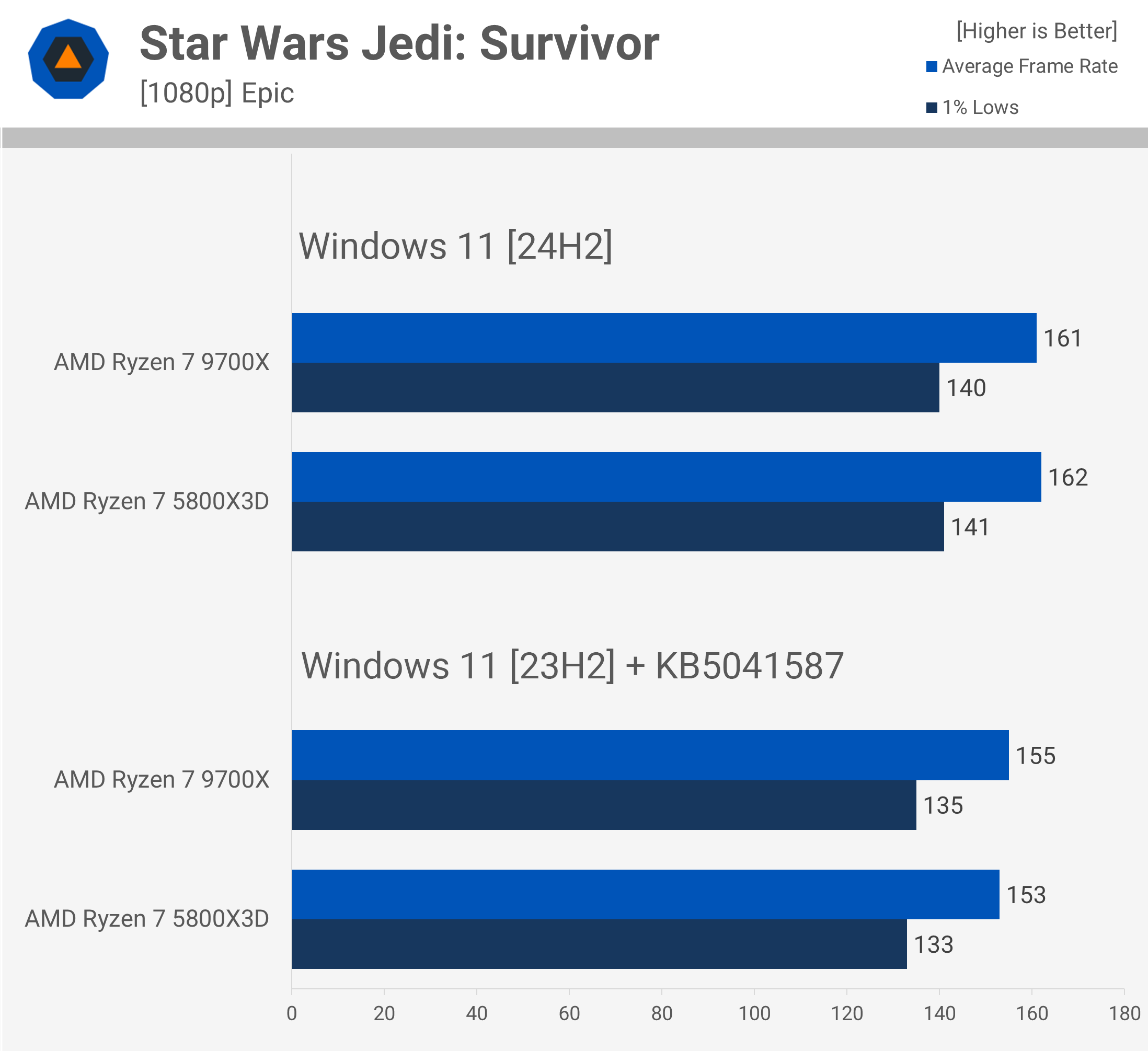
World War Z
In World War Z, despite similar 1% lows, the 9700X was 15% faster than the 5800X3D in terms of average frame rate.
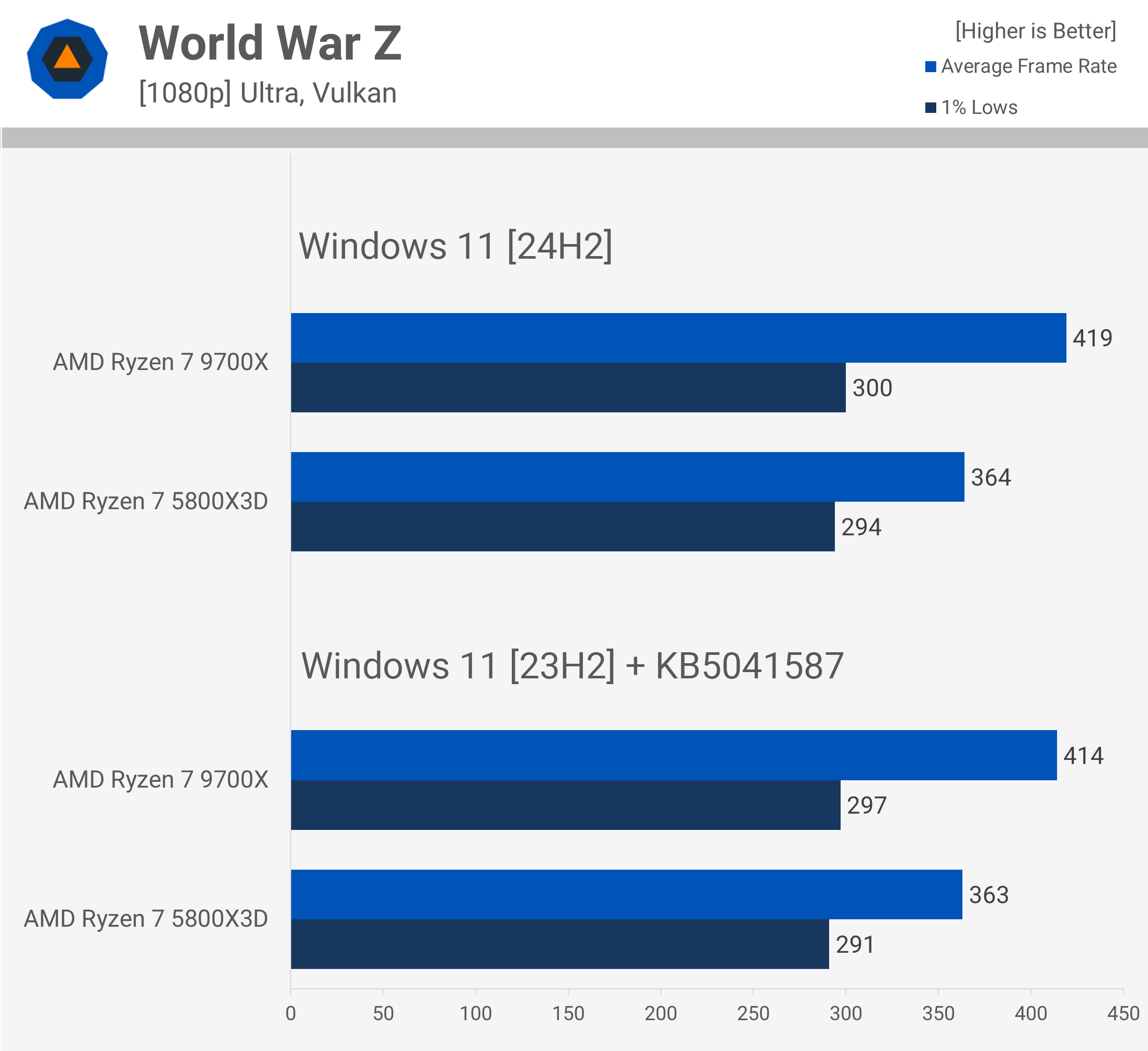
Forza Horizon 5
Forza Horizon 5 ran well on both CPUs, with little to no difference between the patched 23H2 and 24H2 builds. On 24H2, the 9700X offered just 3% better average performance, though the 1% lows improved by 10%.

Forza Motorsport
Forza Motorsport performance was resolved with the 23H2 patch, and there’s no change with the official 24H2 release. Both the 5800X3D and 9700X deliver the same level of performance in this title.
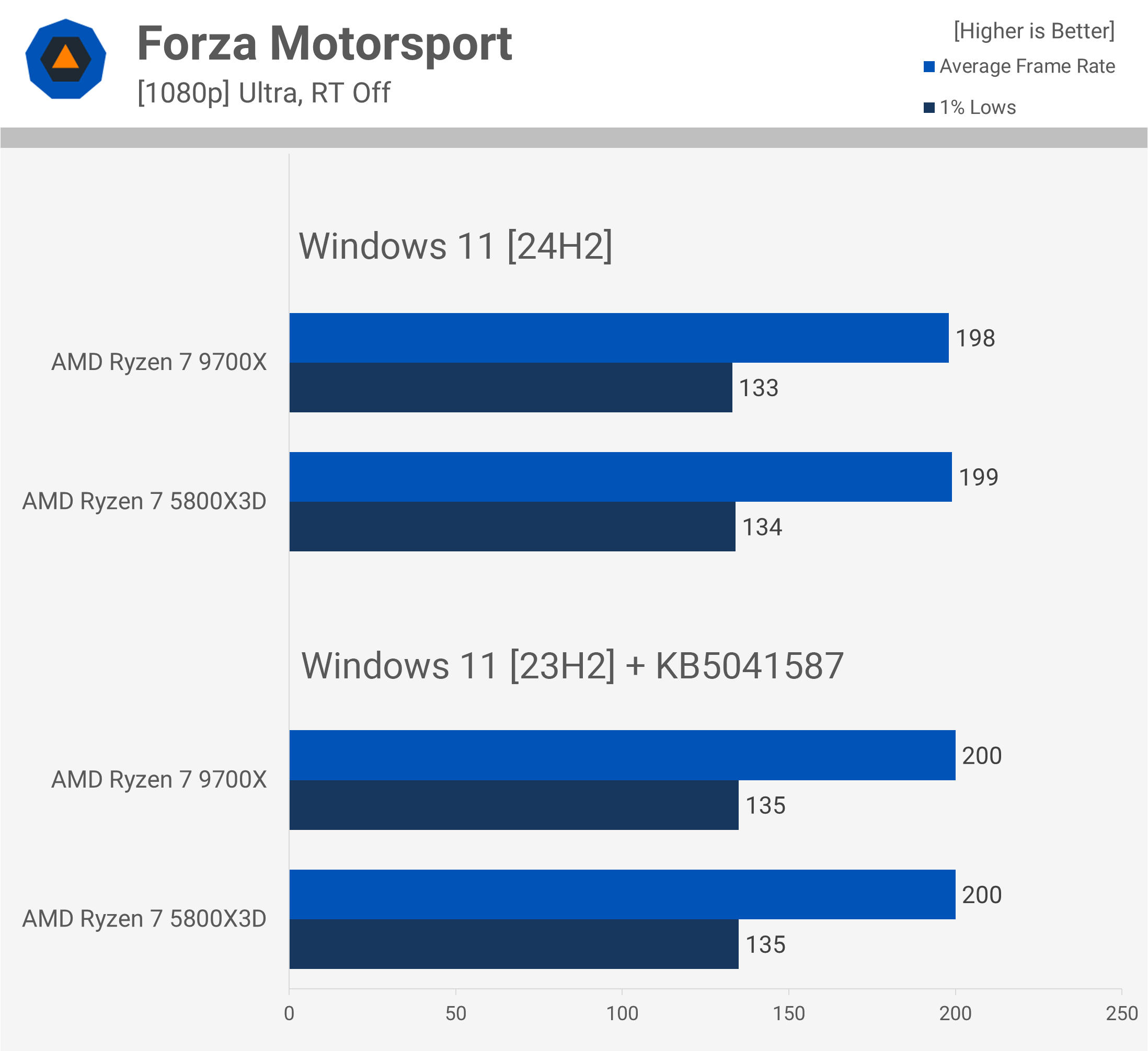
Gears 5
Lastly, Gears 5 had performance issues on 23H2, even after the patch. On 24H2, the 9700X is 15% faster, while the 5800X3D shows a 13% improvement. Comparing the patched 23H2 to 24H2, the 5800X3D ends up being 15% slower than the 9700X in this title.

22 Game Average
Here’s a look at the average performance across the 22 games tested. As you can see, the 5800X3D was just 6% slower than the 9700X. This is similar to the 10% margin seen in our 9700X review, which used a different set of games and Windows 11 23H2 before the update.
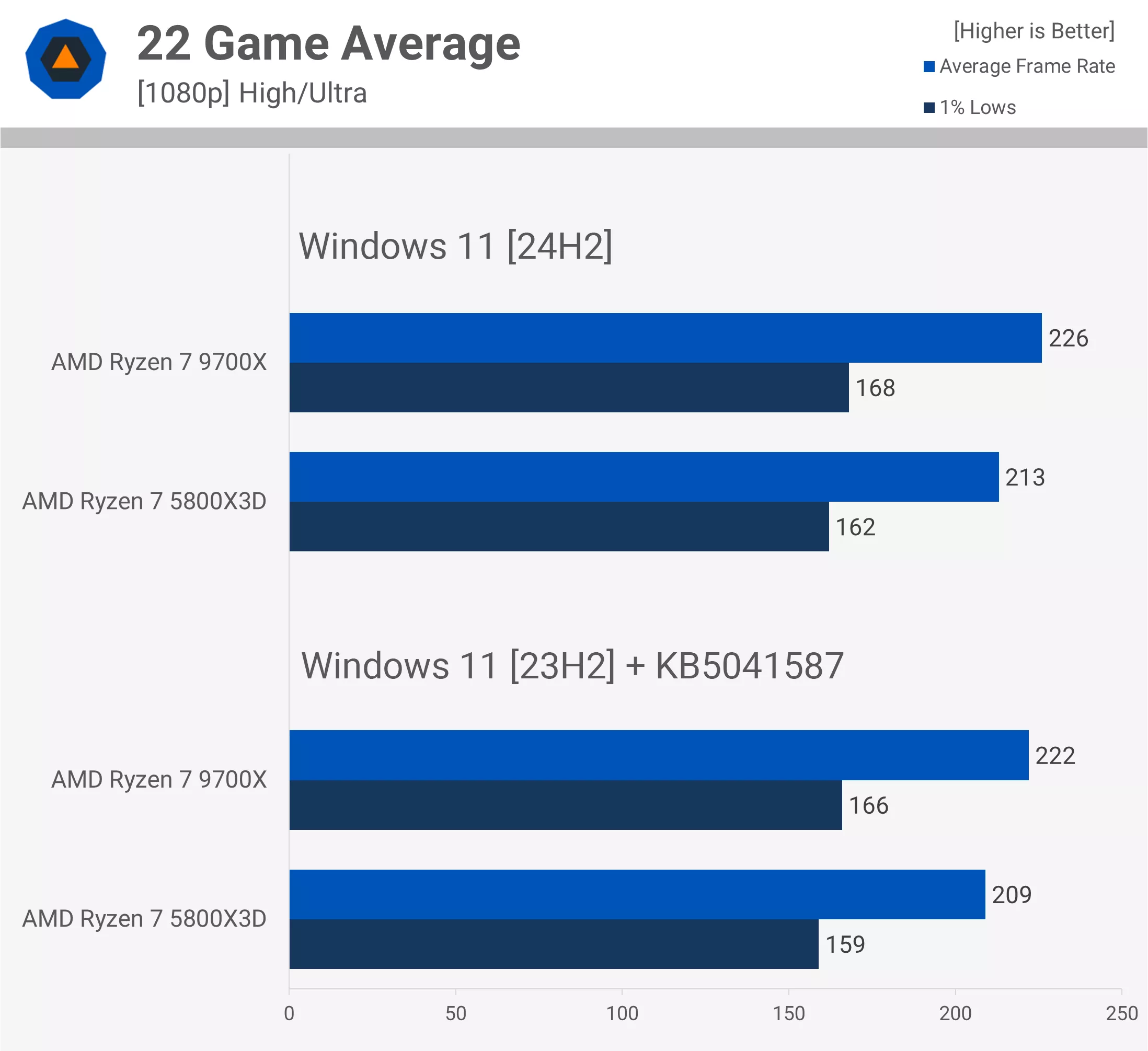
However, if we measure the percentage difference on a per-game basis and then average that data (a different method from the geomean), the margin narrows to 4%. The point is, whether it’s 4% or 6%, the difference between the 5800X3D and 9700X in terms of gaming performance is minimal.

In only one instance was the 5800X3D significantly faster, with a double-digit lead in Spider-Man Remastered. On the flip side, it was 10% or more slower in seven games, with the largest performance gaps in Rainbow Six Siege, Gears 5, Remnant II, and World War Z.
What We Learned
This testing highlights why there’s so much love for the 5800X3D amongst PC enthusiasts, although it was released over two years ago, it’s still hanging in there with top modern processors. Granted, it’s not unusual for an older flagship CPU to provide playable performance in new games, but the 5800X3D goes beyond that, offering very competitive performance.
The 5800X3D also wasn’t an expensive CPU. Sure, it launched with an MSRP of $450, but that price dropped quickly. By late 2022, it was available for as low as $330, and later even as low as $315, though it was reliably sold for no more than $350.
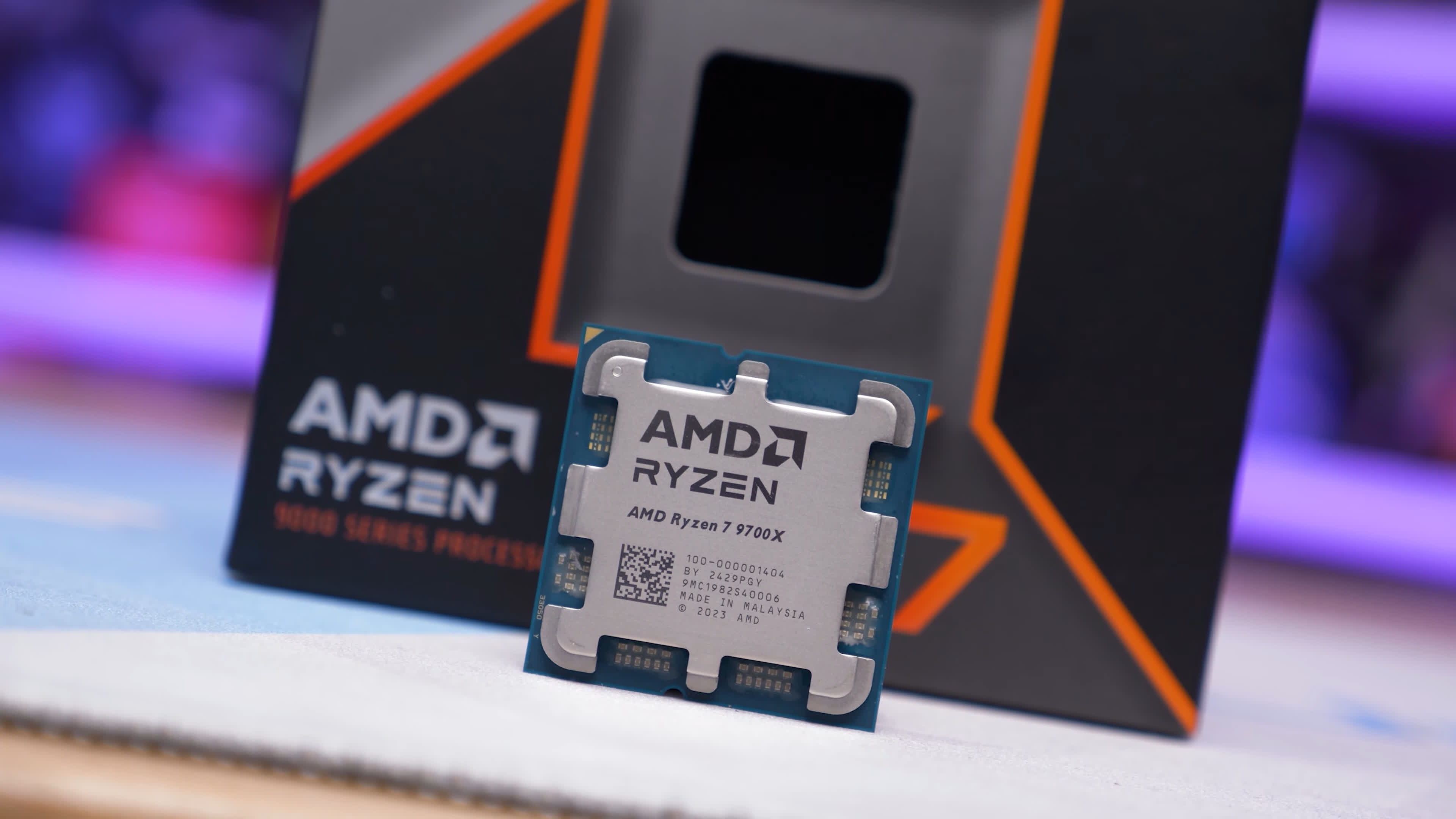
Today, the Ryzen 7 9700X costs $330, which is $30 below its MSRP, even though it was only released two months ago. Despite this, it’s only 6% faster on average than the 5800X3D, and although it lacks 3D V-Cache technology, this performance gap is somewhat disappointing for a Zen 5 processor, considering both are available at roughly the same price.
Of course, the 5800X3D is no longer on the market, so this isn’t buying advice. We’d recommend the 9700X for those with a similar budget. However, this comparison highlights why the 9700X has been received with some criticism. We’re talking about a CPU two generations newer, built on a more modern architecture, utilizing DDR5 memory, yet only 6% faster on average – or 10% faster in our initial review.

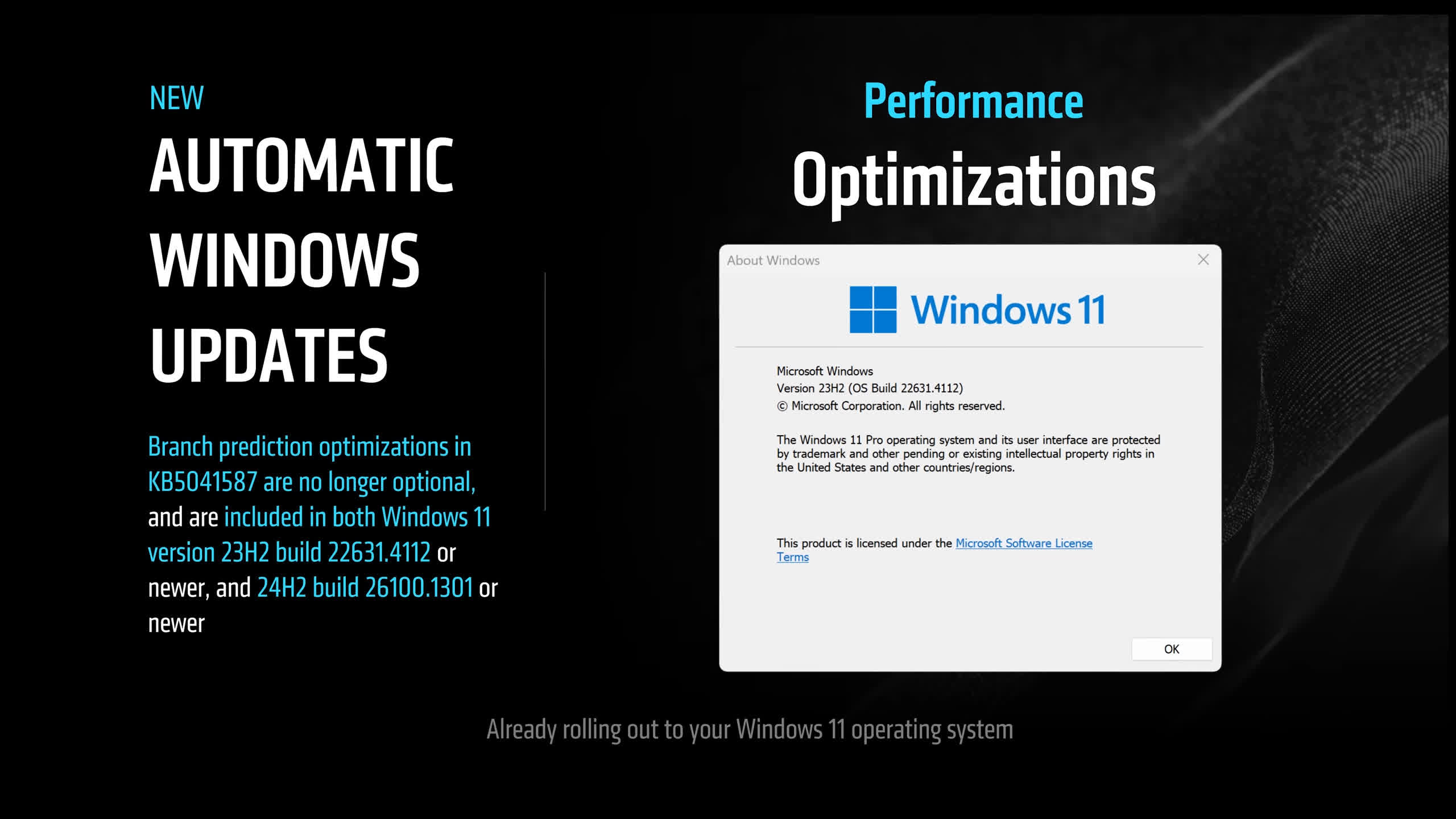
Since its release just two months ago, there has been a lot of discussion about how Zen 5 is “improving.” There’s the new AGESA code, which we’ve tested here, the branch prediction update, which we’ve also tested, the new 105W TDP mode (a weaker version of the already underwhelming PBO mode), and the new 800-series motherboards, which offer no performance boost for Zen 5.
As has been the case with Zen 5 since its launch, there’s been plenty of talk about how it’s supposedly better than the results suggest, yet the actual evidence hasn’t changed. For gaming, Zen 5 is middling, and even with discounted prices, you might be better off looking at Zen 4. Perhaps the upcoming 3D V-Cache models will change this narrative – we certainly hope so – but that remains to be seen.

What we do know is that the 5800X3D is still performing admirably, and the Windows 11 24H2 update does improve performance in certain games. For those considering upgrading to 24H2, we recommend starting fresh: manually backup all your data, download the 24H2 ISO from Microsoft, and install it without keeping any old files. The Windows update process has always been somewhat unreliable, so to ensure maximum performance and stability, we suggest a fresh install without carrying over old data.


